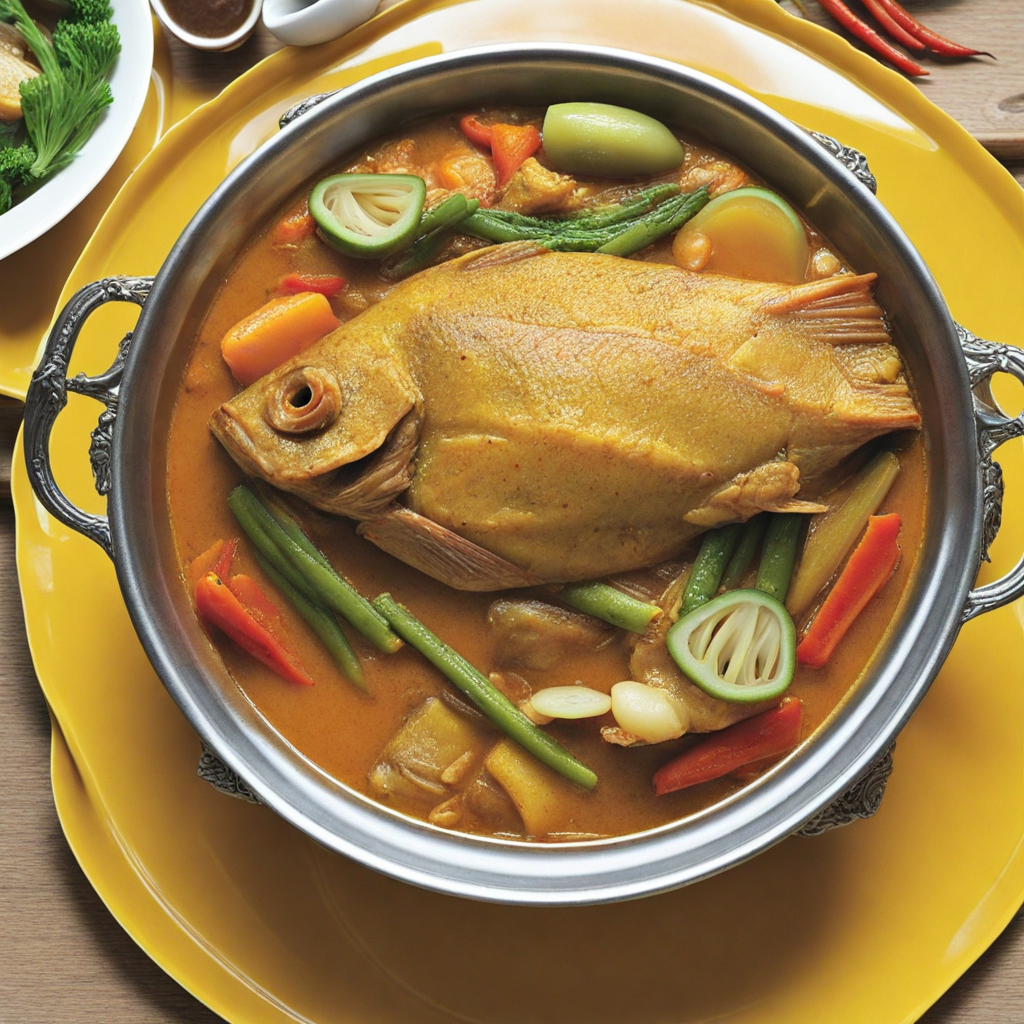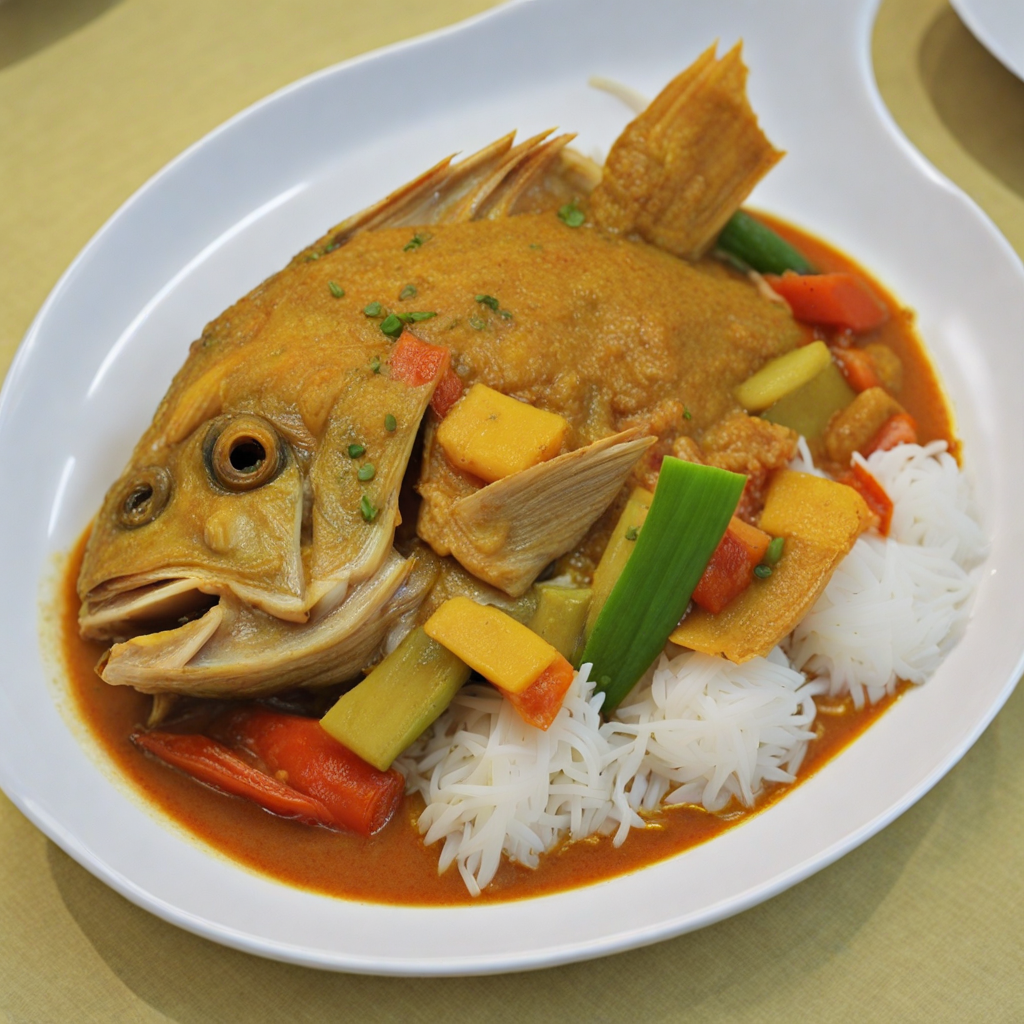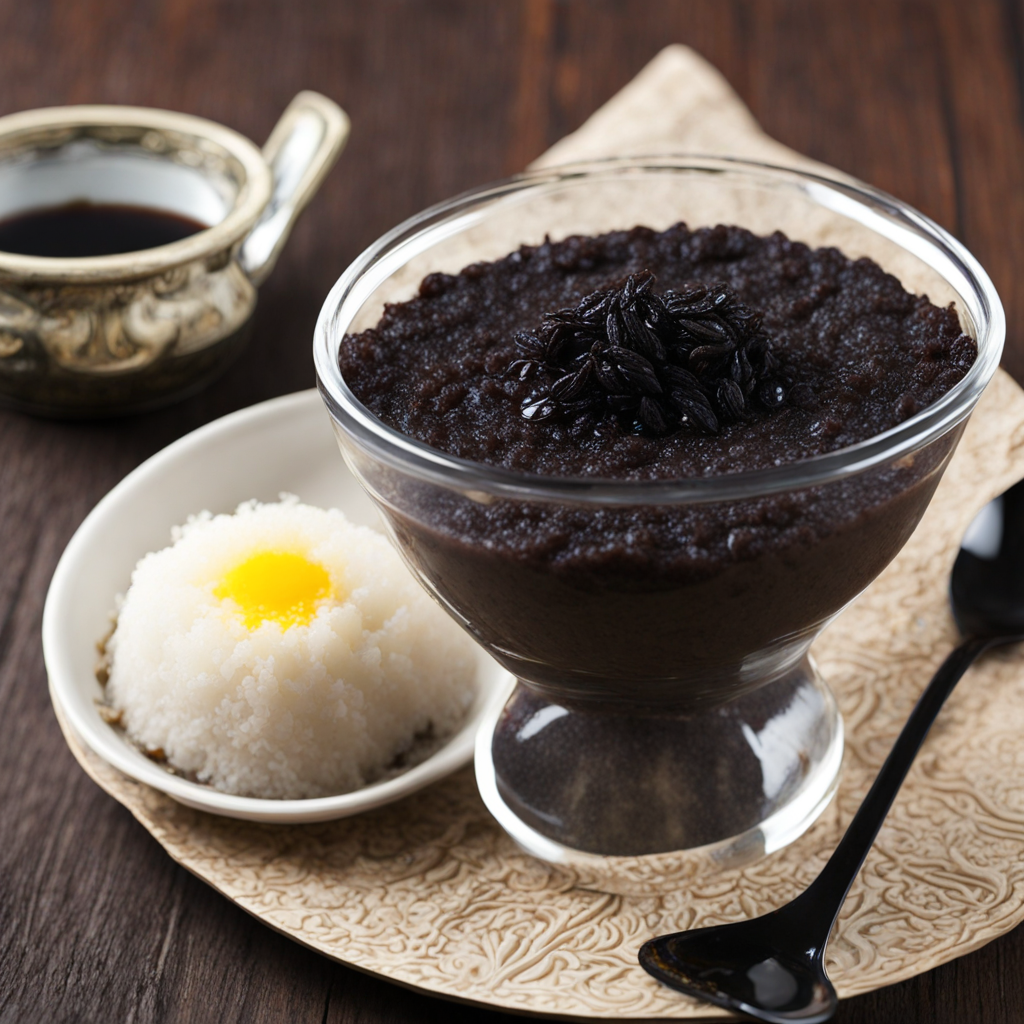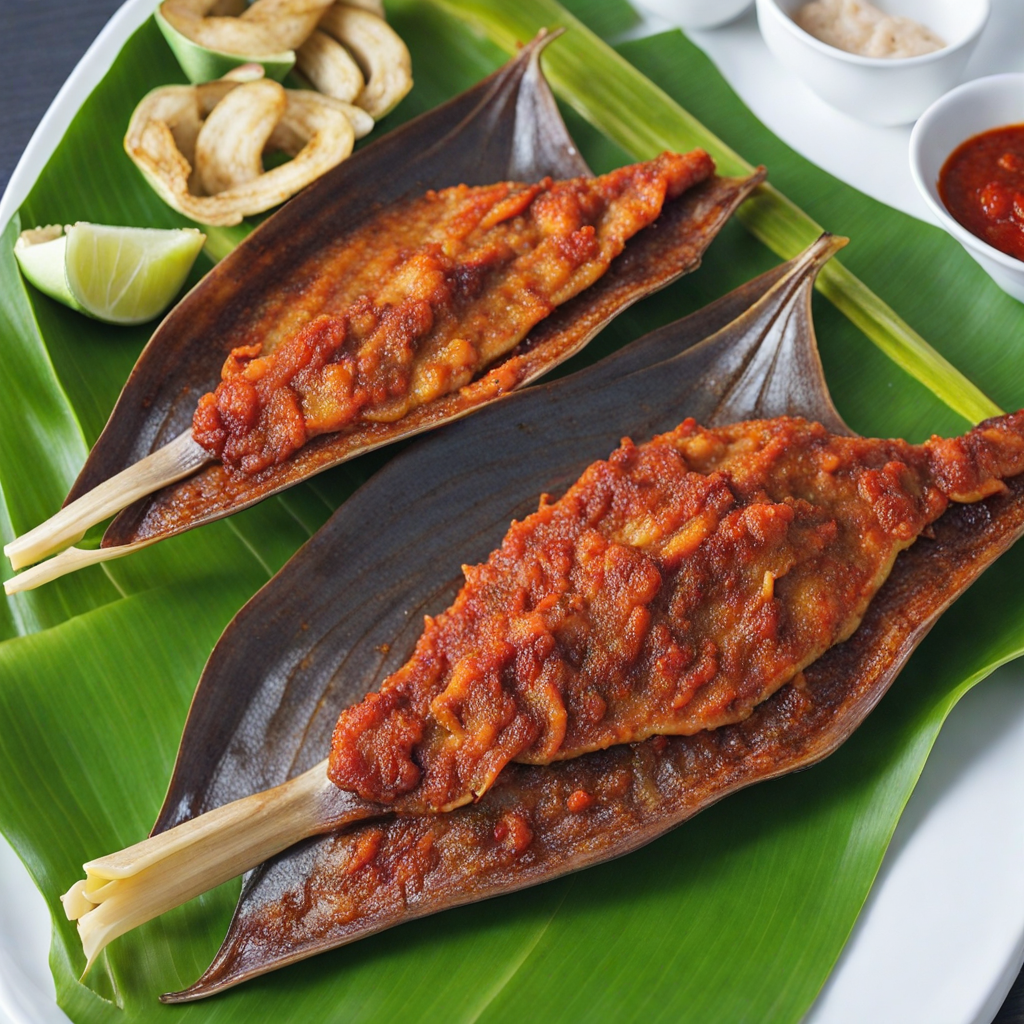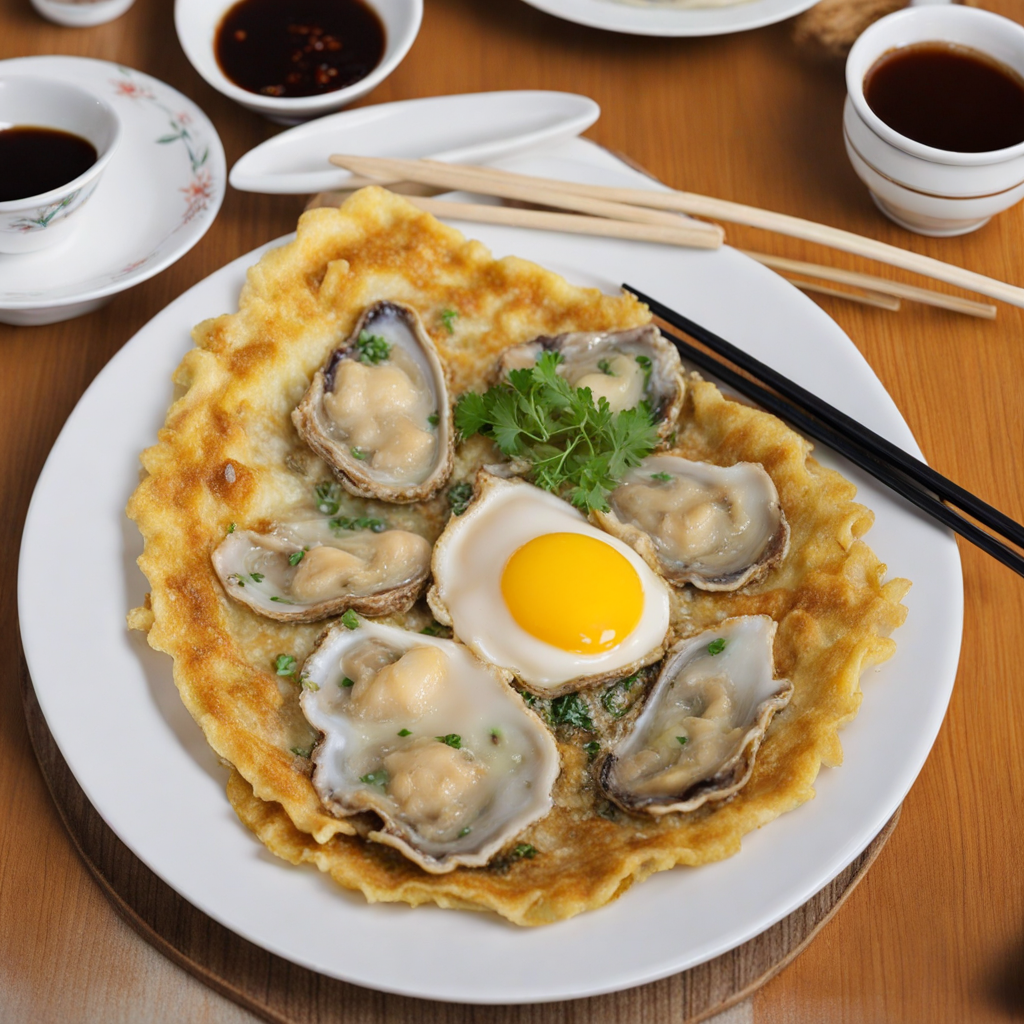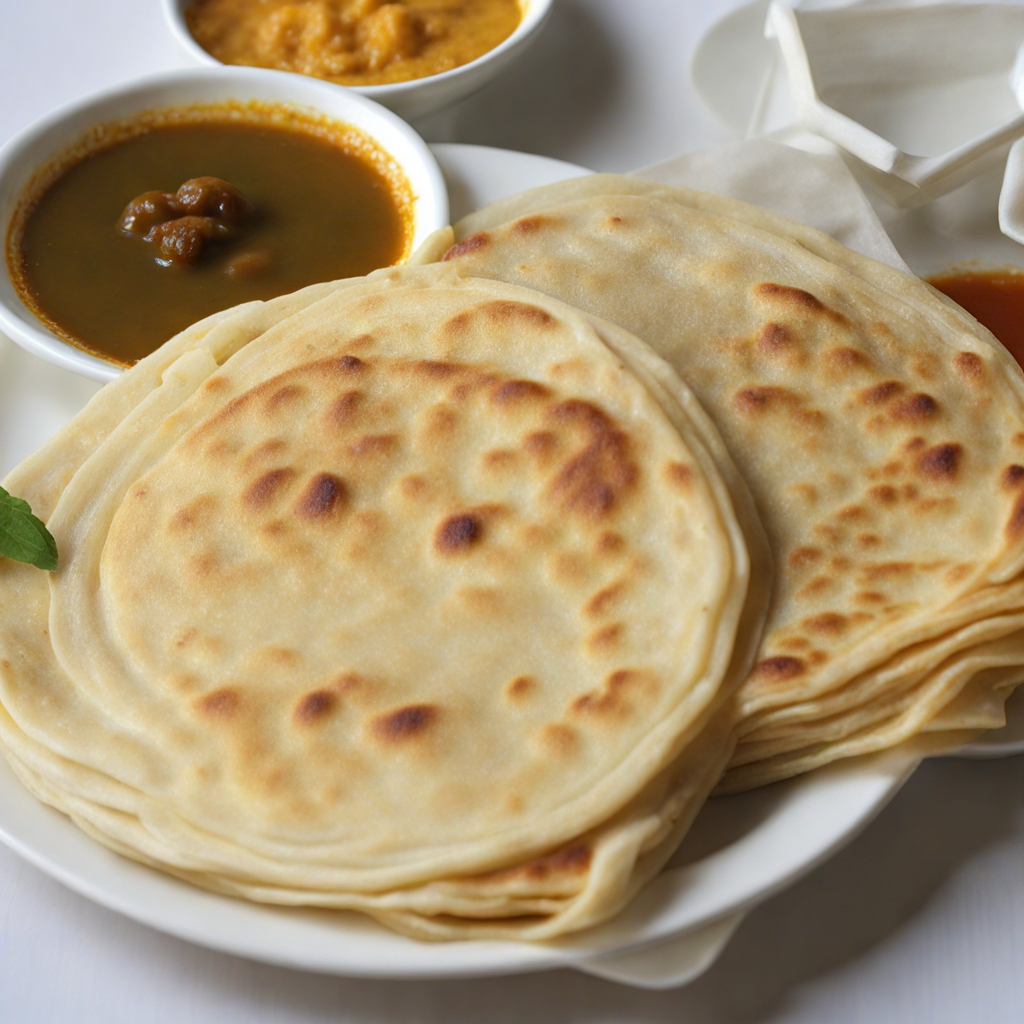Curry Fish Head
Curry Fish Head is a vibrant and aromatic dish that showcases the best of Singapore's culinary heritage. At its core, the dish features a whole fish head, typically from a red snapper, which is simmered in a rich and flavorful curry sauce. The curry is a harmonious blend of spices, including turmeric, coriander, and chili, which creates a warm, earthy base that is both comforting and exciting to the palate. The fish head, with its tender flesh and gelatinous parts, absorbs the curry's flavors beautifully, making each bite a delightful experience. The accompanying ingredients often include a medley of vegetables such as eggplant, okra, and tomatoes, which add texture and contrast to the dish. The vegetables soak up the curry's essence, enhancing their natural sweetness and providing a refreshing balance to the robust flavors of the fish head. The dish is typically served with steamed jasmine rice or fluffy roti, allowing diners to scoop up the luscious sauce and savor every morsel. The combination of spices, fresh ingredients, and the unique texture of the fish head creates a symphony of flavors that is both indulgent and satisfying. One of the most captivating aspects of Curry Fish Head is its communal nature, often enjoyed in a group setting where people gather around the table to share stories and laughter. This dish is not just a meal; it is an experience that invites diners to explore new tastes and textures while celebrating the rich cultural tapestry of Singaporean cuisine. Whether you are a seasoned food enthusiast or a curious newcomer, Curry Fish Head promises a culinary adventure that is sure to leave a lasting impression.
How It Became This Dish
The History of '咖喱鱼头' (Curry Fish Head) in Singapore #### Origins Curry Fish Head, or "咖喱鱼头" (gālí yú tóu) in Mandarin, is a quintessential dish in Singapore's culinary landscape, reflecting the nation's rich tapestry of cultural influences. The dish's origins can be traced back to the Chinese communities, particularly the Peranakan (Straits Chinese) culture, which emerged from the intermarriage of Chinese immigrants and local Malay populations in the 15th to 17th centuries. The Peranakan culture is known for its unique blend of Chinese and Malay traditions, which is vividly expressed in its cuisine. The dish itself features a large fish head, often from a red snapper or grouper, simmered in a spicy and aromatic curry sauce. This preparation highlights the Chinese affinity for fish, which is seen as a symbol of abundance and prosperity, particularly in celebratory contexts. The choice of fish head as the main ingredient also reflects the traditional Chinese belief in utilizing every part of the animal, minimizing waste and maximizing flavor. #### Cultural Significance Curry Fish Head is more than just a meal; it represents the fusion of cultures that characterizes Singapore’s food scene. The melding of Chinese cooking techniques with Indian spices and Malay flavors exemplifies the multicultural identity of Singapore. This dish is often enjoyed communally, with diners sharing the fish head, which serves as a centerpiece, surrounded by rice and a variety of side dishes. This communal aspect echoes the traditional values of family and togetherness prevalent in many Asian cultures. Moreover, the dish has become a staple in hawker centers, local eateries, and restaurants across Singapore, making it accessible to a wide range of people. Its popularity has also positioned it as a symbol of Singaporean street food, embodying the country's culinary ethos of delivering bold flavors and vibrant experiences at affordable prices. #### Development Over Time The evolution of Curry Fish Head can be linked to the broader development of Singapore's culinary scene, particularly in the late 20th century. As Singapore underwent rapid urbanization and economic growth, food became a vital aspect of national identity. The government’s push for a cohesive national culture encouraged the celebration of local foods, and dishes like Curry Fish Head emerged as emblematic of Singapore's unique heritage. In the 1970s and 1980s, Singapore experienced a culinary renaissance. Chefs began experimenting with flavors and presentation, elevating traditional dishes to new heights. Curry Fish Head was no exception; it saw variations that incorporated additional elements such as coconut milk, tamarind, and a myriad of spices, further enhancing its complexity. Some chefs even began to innovate by introducing fusion aspects, combining traditional curry with other culinary influences. Restaurants specializing in Curry Fish Head began to emerge, with each establishment boasting its own secret recipe. This led to a delightful competition where chefs sought to distinguish their offerings through unique spice blends, cooking methods, and presentation styles. The dish quickly gained traction not just among locals but also among tourists, contributing to Singapore’s reputation as a food paradise. In the 1990s, the rise of food media played a pivotal role in popularizing Curry Fish Head. Food bloggers, television shows, and culinary competitions brought this dish to the forefront, celebrating its flavors and cultural significance. The dish was no longer confined to humble hawker stalls; it became a featured item in upscale restaurants, showcasing the versatility and adaptability of Singaporean cuisine. #### Modern Interpretations Today, Curry Fish Head has evolved further, with chefs experimenting with new ingredients and techniques while staying true to its roots. Some establishments offer vegetarian versions using tofu or mock fish, catering to the growing demand for plant-based options. Others have introduced fusion twists, such as incorporating Japanese curry elements or adding local ingredients like laksa leaves, which imbue the dish with a unique twist. The rise of food delivery services and social media has also played a significant role in its contemporary popularity. Diners can now enjoy Curry Fish Head from the comfort of their homes while sharing their experiences online, further amplifying its presence in popular culture. The dish has become a topic of conversation on social media platforms, with food enthusiasts showcasing their favorite spots and creative interpretations. Furthermore, the global pandemic saw a renewed interest in home cooking, with many Singaporeans trying their hand at making Curry Fish Head. This led to an exchange of recipes and cooking tips online, fostering a sense of community and nostalgia for traditional meals. As people sought comfort in familiar flavors, Curry Fish Head emerged as a beloved dish, symbolizing resilience and the enduring nature of culinary traditions. #### Conclusion Curry Fish Head is not merely a dish; it is a narrative woven into the fabric of Singapore’s culinary heritage. From its humble beginnings in the Peranakan kitchens to its status as a beloved staple in hawker centers and fine dining establishments alike, this dish epitomizes the spirit of Singapore—a melting pot of cultures, flavors, and traditions. As the world continues to evolve, so too will the interpretations of Curry Fish Head, ensuring that it remains relevant and cherished in the hearts of both locals and visitors. Whether enjoyed in a bustling hawker center or a trendy restaurant, Curry Fish Head serves as a delicious reminder of Singapore’s rich history, cultural diversity, and the power of food to bring people together. In a country known for its culinary innovation and heritage, this dish stands as a testament to the beauty of fusion cuisine and the stories that each bite tells.
You may like
Discover local flavors from Singapore


